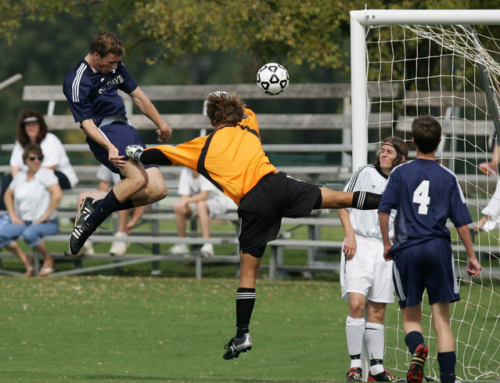GRIT. In my last article, I raised the question: Got GRIT? The importance of GRIT is widespread, and especially so for students. It has a great history of creating success. The bright idea often has a center of grit. Many things are smoothed with grit. Courage contains a large amount of grit. Getting through the challenges, expectations, and changes of all parts of our daily lives also requires GRIT. In my mind, GRIT has four facets:
Goals
Resilience
Ingenuity
Time Management
In this article, I will discuss the Ingenuity and Time Management parts of GRIT.
Ingenuity and Creativity are so essential for success, and certainly part of GRIT. I recently attended a multi-day workshop on creativity. While I expected fun, it was actually work. That’s how I know ingenuity is part of GRIT.
Ingenuity is a multi-level word. This can range from novelty to the unusual, and certainly the creative. In my experience, the majority of the most creative people I know are children. A simple shoe box can become so many things – goggles, a purse, a house/barn/garage, a stairstep for a Slinky, a sink or pool, and even partitioned to be a diorama or a 3-d rendering of the interior of a building. I’m sure you can think of other things. Or can you? Seems that the older we are, the less creative we can be.
Why is creativity hard to maintain? Over 60 years of research has outlined the essentials of creativity. Understanding these skills will help make the challenges of creativity clear.
1. Preparation/Fluency – the goal and problem to be solved must be well understood. Gathering information, as well as thinking about how the idea can be done “differently” is vital. How many ideas can be generated? The booming world of Pinterest is just one example of this process.
2. Incubation/Flexibility – allow the ideas to consolidate, expand, ferment. This is best accomplished by “sleeping on it.” The white matter in the brain can make connections once the frontal lobe disengages from the analysis. In addition, there is the transformational power of play in it’s pure form. Even when “playing with an idea” or “toying with a solution” we allow creativity.
3. Inspiration/Originality – spend time looking for and ensuring that our ideas are indeed novel. We look for the alternative road, the unconventional. Play in early years values this; higher-level education tends to forget, replacing it with memorization rather than analysis originality.
4. Verification/Elaboration – test the idea, have a trial run, apply it to reality, &/or use technology for a sample event to allow the idea to be put into action. For writers, this can be passing a draft to someone. Others build scale models or conduct the first of many experiments. Does the idea “hold water”? Does it actually stretch, expand, and redirect the conventional idea? Novelty in and of itself can be enjoyable and most often is a huge reward that is connected with GRIT. Unfortunately, many high-stakes assessments and some teachers, tutors, and, yes, parents, are too tightly focused upon the single, multiple-choice response, as the “right” answer.
The Value of Ingenuity and GRIT is the unusual and the distinctive. Think of a great innovator, creator, or someone who is very talented in their chosen field. Underneath their GRIT, if you dig deeply enough, you will find ingenuity and creativity. How do they do that?
This takes us to the concept of Time Management. There is so much written on this concept. We all know what it means but struggle in making it a reality. Schedules are great, but we often fail to be realistic about how much time an activity may take. Time measurement is needed.
In the daily tasks of life, we need to be aware of how long we need to do a “good job.” This means using a stopwatch. For a week, note down the duration spent in each activity. Students will often fail to estimate their time usage and this leads to avoidance or hurrying through. Timing each homework task is a great first step in making an effective daily schedule.
Calendars structure time. Recently I have watched most people rely upon a 1 day view on their “smart” devices. In school, students must have a longer view. This means using some type of calendar that shows the day, week, and month. Each day before a test should have “study for the test” as a to-do item. Long-term projects should be dealt with every.single.day with a SMART goal for the end of each week. Use a very creative magnetic “chalkboard “ or dry erase calendar. Colorful “chalk”/ink inspires creativity and helps plan one’s approach to the homework, projects, and sequential studies needed to be a successful student.
In the previous GRIT article, we also focused upon resilience. Sticking to a SMART goal requires persistence, reduced distractions, and stamina. In our technology-driven lives, our “natural” attention span has started to shrink. We all have experienced this.
In order to gain resilience, time-management skills must encourage us to PERSIST. Many parents ask me, “How much time should we spend on homework each night?” I surprise them by talking about homework in phases, almost like a song. There’s the verse, and then there’s a refrain. (Isn’t this a creative analogy?) We have to have solid work/study and then break periods. For every XX minutes at solid work, there needs to be XX minutes of rest. For example, after 20 minutes of work, a 10 minute break is needed. The brain rests, memory consolidates, and we feed the body with protein. Notice I did not say “embrace screen time.” It is far too attractive. Teens and adults are most vulnerable, with 75% of them “checking” devices every 10 minutes. With the growing use of technology as a learning platform and delivery mode makes it even more difficult to resist fun exploration and return to studies. Use a visual “timer” which allows the person to see the remaining time to help with PERSISTENCE.
You’ve already made steps to applying GRIT – you’ve read both articles on the topic!


